Dessau, Germany on:
[Wikipedia]
[Google]
[Amazon]
Dessau is a town and former municipality in Germany at the confluence of the rivers
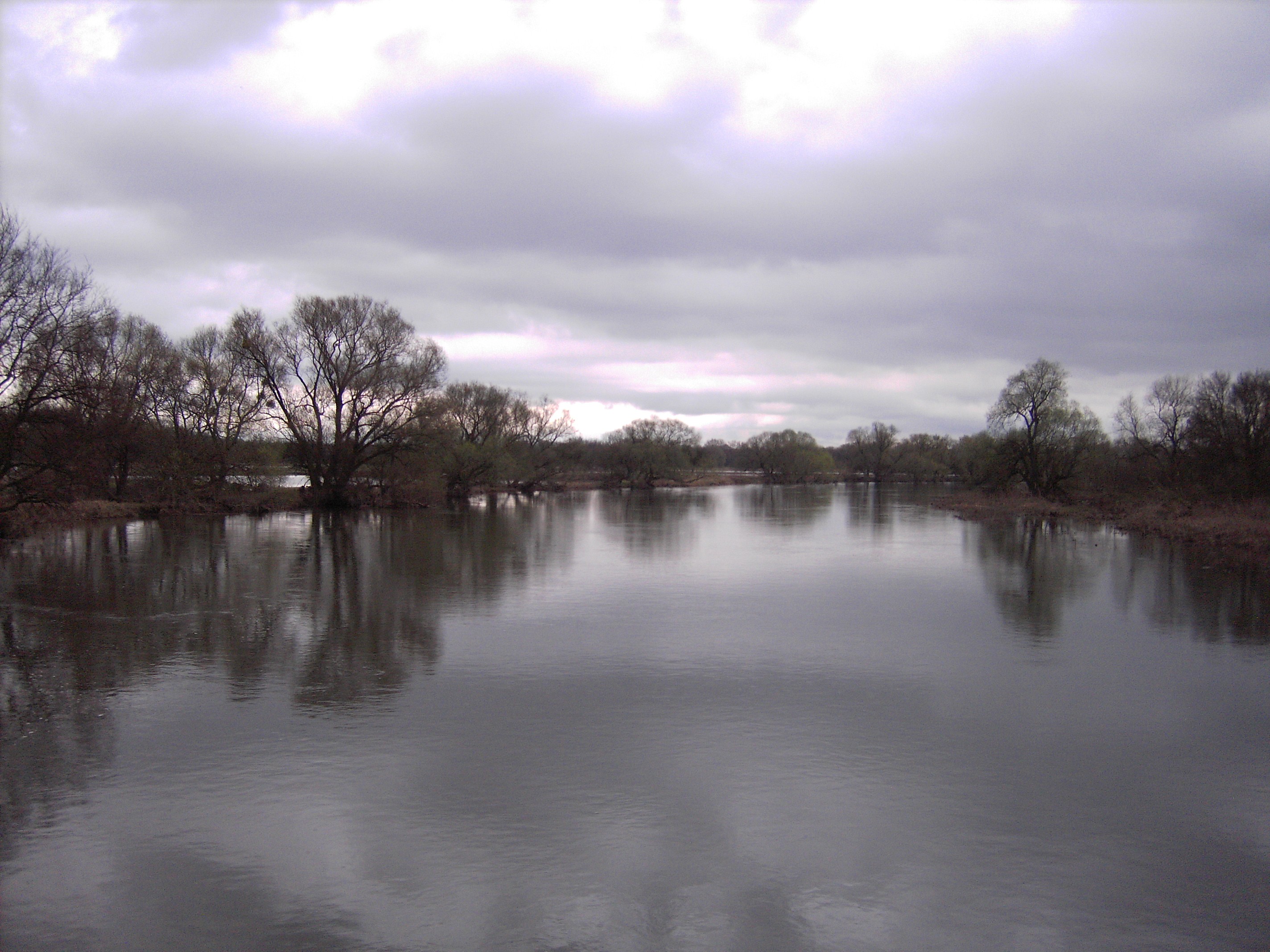 Dessau is situated on a floodplain where the
Dessau is situated on a floodplain where the
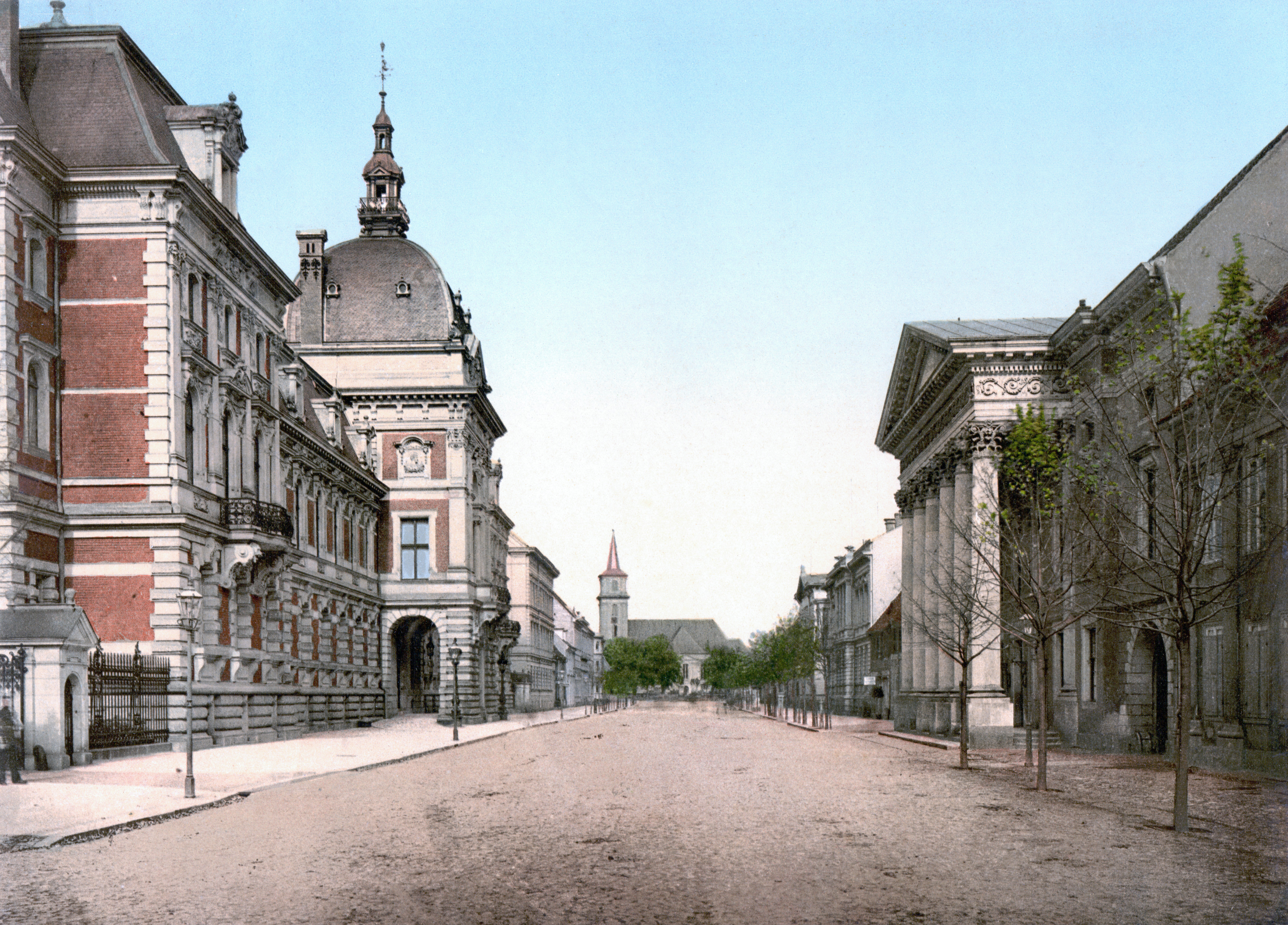 Dessau is famous as the second site of the
Dessau is famous as the second site of the
 * Garden Kingdom of Dessau-Wörlitz, (''Dessau-Wörlitzer Gartenreich'') is a
* Garden Kingdom of Dessau-Wörlitz, (''Dessau-Wörlitzer Gartenreich'') is a
 There are several examples of
There are several examples of
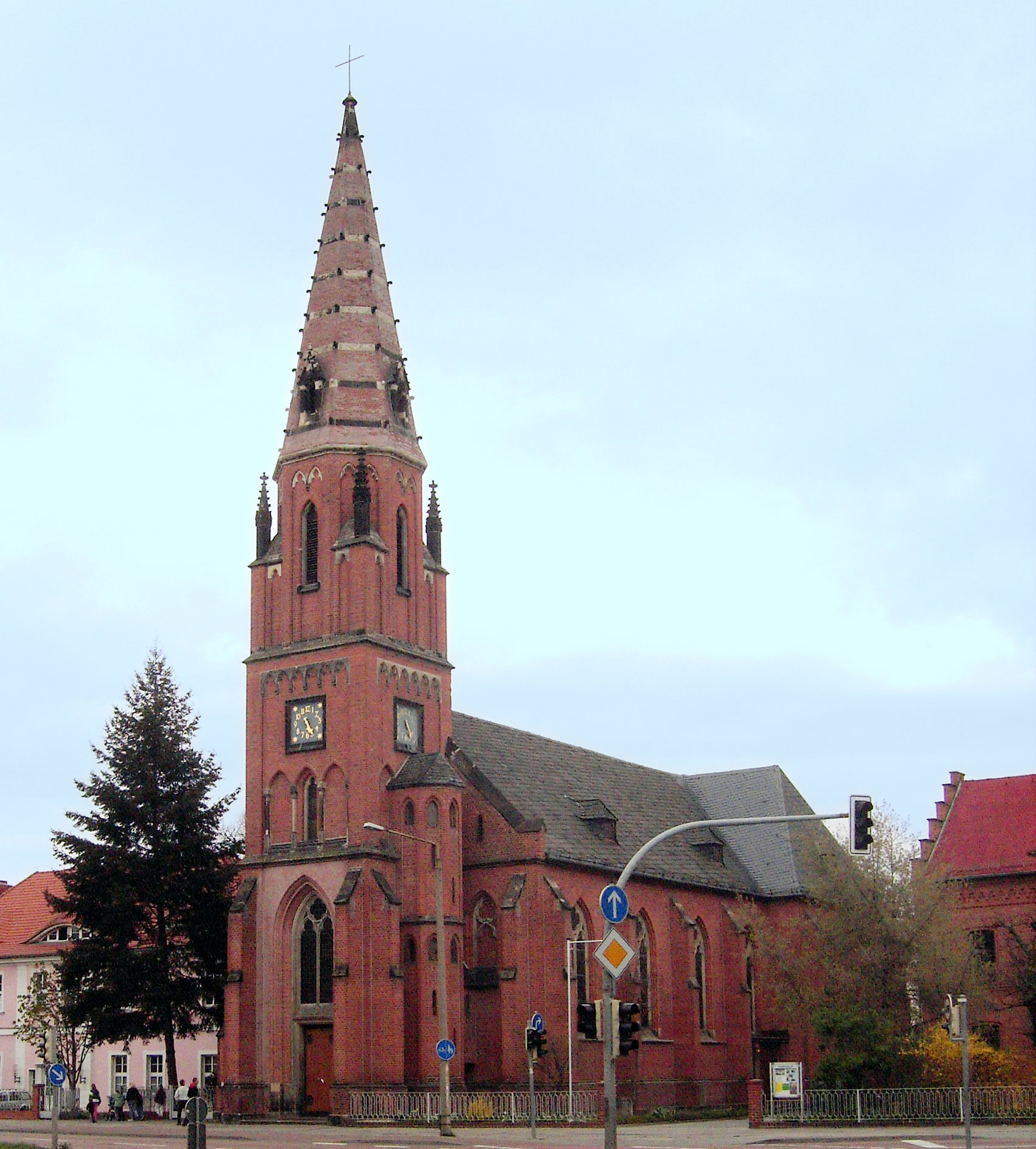 *St. Mary's Church
*St. John's Church
*Georgenkirche
*Petruskirche
*Auferstehungskirche
*Pauluskirche
*Christuskirche
*Propsteikirche St. Peter and Paul
*Dreieinigkeit
*St. Josef
*St. Mary's Church
*St. John's Church
*Georgenkirche
*Petruskirche
*Auferstehungskirche
*Pauluskirche
*Christuskirche
*Propsteikirche St. Peter and Paul
*Dreieinigkeit
*St. Josef
 * Townhall, built in 1901
* The palaces of Waldersee and Dietrich, today used as libraries
* General post office
* New water tower
* ''Umweltbundesamt'' (formerly Wörlitzer Bahnhof)
* Footbridge crossing the river Mulde
* Townhall, built in 1901
* The palaces of Waldersee and Dietrich, today used as libraries
* General post office
* New water tower
* ''Umweltbundesamt'' (formerly Wörlitzer Bahnhof)
* Footbridge crossing the river Mulde
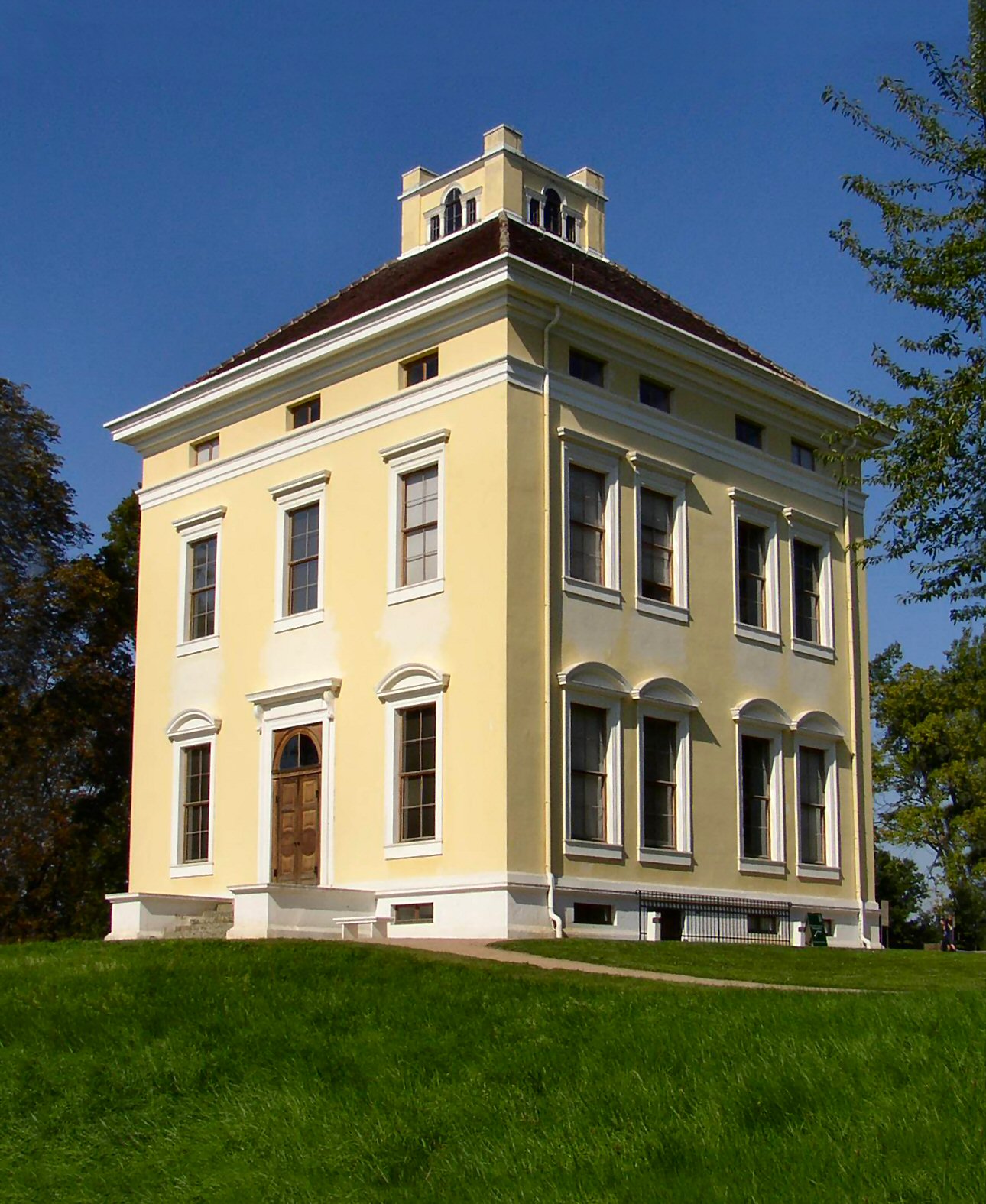 * Anhalt Theatre including Gregor Seyffert & Compagnie
* City history museum
* Anhalt Art Gallery at Georgium Palace with park (currently closed)
* Mosigkau Palace museum
* Luisium Castle museum with park
* Oranienbaum Palace museum with park
* Museum of Natural- and Prehistory
*
* Anhalt Theatre including Gregor Seyffert & Compagnie
* City history museum
* Anhalt Art Gallery at Georgium Palace with park (currently closed)
* Mosigkau Palace museum
* Luisium Castle museum with park
* Oranienbaum Palace museum with park
* Museum of Natural- and Prehistory
*

 In 1938 the
In 1938 the
 The borough of Dessau was first mentioned in 1372. The head of the town called "Schultheiss" was constituted by the count. Together with a few assessors the "Schultheiss" formed the town council. As of 1372 the town council was divided into two agencies, as of 1600 into three agencies and as of 1785 again into two agencies. The "Schultheiss" of Dessau changed nearly every year until the town council constitution was cancelled in 1832. Afterwards Dessau became a Town Council and a Town Delegation Constitution. Since 1852 the town leader is called Mayor. During the National Socialist period the Mayor was appointed by the party (
The borough of Dessau was first mentioned in 1372. The head of the town called "Schultheiss" was constituted by the count. Together with a few assessors the "Schultheiss" formed the town council. As of 1372 the town council was divided into two agencies, as of 1600 into three agencies and as of 1785 again into two agencies. The "Schultheiss" of Dessau changed nearly every year until the town council constitution was cancelled in 1832. Afterwards Dessau became a Town Council and a Town Delegation Constitution. Since 1852 the town leader is called Mayor. During the National Socialist period the Mayor was appointed by the party (
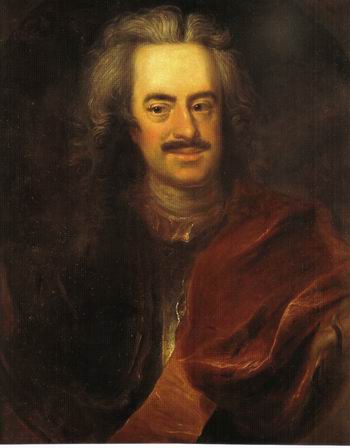


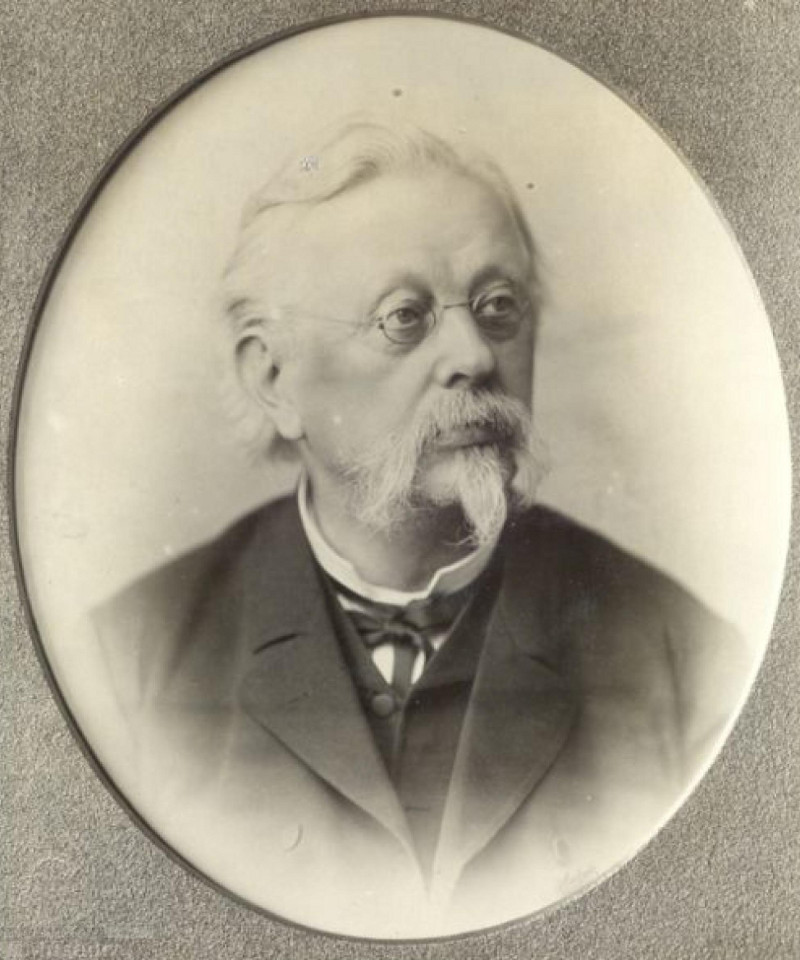

 ;Aristocracy
* George III, Prince of Anhalt-Dessau (1507–1553), prince
*
;Aristocracy
* George III, Prince of Anhalt-Dessau (1507–1553), prince
* IMDb Database
retrieved 21 September 2019
* Annette Schlünz (born 1964), a German musician and composer
* Michael Flade (born 1975), German composer of electronic music
;Sport
* Ameli Koloska (born 1944), javelin thrower, competed in the
File:Dessau mit Mulde.jpg, Dessau with the remains of the Dessau Palace and Mulde river
File:Jagdbrücke über die Mulde bei Dessau 2.JPG, Hunting bridge over the Mulde (b. 1993)
File:Bundesarchiv Bild 183-R14718, Dessau, Junkers-Werke.jpg, Junkers-works in Dessau and portrait of its founder
File:Anhaltisches Theater Dessau.jpg, Anhaltisches Theater
File:Seitenansicht Dessauer Rathaus.jpg, Side view of the Rathaus Dessau
Official Website of Dessau
(English and German) {{Authority control Populated places disestablished in 2007 Former municipalities in Saxony-Anhalt Historic Jewish communities Duchy of Anhalt Populated riverside places in Germany Populated places on the Elbe
Mulde
The Mulde () is a river in Saxony and Saxony-Anhalt, Germany. It is a left tributary of the Elbe and is long.
The river is formed by the confluence, near Colditz, of the Zwickauer Mulde (running through Zwickau) and the Freiberger Mulde (with ...
and Elbe
The Elbe (; cs, Labe ; nds, Ilv or ''Elv''; Upper and dsb, Łobjo) is one of the major rivers of Central Europe. It rises in the Giant Mountains of the northern Czech Republic before traversing much of Bohemia (western half of the Czech Re ...
, in the '' Bundesland'' (Federal State) of Saxony-Anhalt
Saxony-Anhalt (german: Sachsen-Anhalt ; nds, Sassen-Anholt) is a state of Germany, bordering the states of Brandenburg, Saxony, Thuringia and Lower Saxony. It covers an area of
and has a population of 2.18 million inhabitants, making it th ...
. Since 1 July 2007, it has been part of the newly created municipality of Dessau-Roßlau
Dessau-Roßlau () is a '' kreisfreie Stadt'' (urban district) in the German state of Saxony-Anhalt. It is situated at the confluence of the rivers Elbe and Mulde. The town was formed by merger of the towns of Dessau and Roßlau in the course of t ...
. Population of Dessau proper: 67,747 (Dec. 2020).
Geography
Mulde
The Mulde () is a river in Saxony and Saxony-Anhalt, Germany. It is a left tributary of the Elbe and is long.
The river is formed by the confluence, near Colditz, of the Zwickauer Mulde (running through Zwickau) and the Freiberger Mulde (with ...
flows into the Elbe
The Elbe (; cs, Labe ; nds, Ilv or ''Elv''; Upper and dsb, Łobjo) is one of the major rivers of Central Europe. It rises in the Giant Mountains of the northern Czech Republic before traversing much of Bohemia (western half of the Czech Re ...
. This causes yearly floods. The worst flood took place in the year 2002, when the Waldersee district was nearly completely flooded. The south of Dessau touches a well-wooded area called Mosigkauer Heide. The highest elevation is a 110 m high former rubbish dump called Scherbelberg in the southwest of Dessau. Dessau is surrounded by numerous parks and palaces that make it one of the greenest towns in Germany.
History
Dessau was first mentioned in 1213. It became an important centre in 1570, when the Principality of Anhalt was founded. Dessau became the capital of this state within theHoly Roman Empire
The Holy Roman Empire was a political entity in Western, Central, and Southern Europe that developed during the Early Middle Ages and continued until its dissolution in 1806 during the Napoleonic Wars.
From the accession of Otto I in 962 ...
. In 1603 the state was split into four – later five – Anhalts, Dessau becoming the capital of the mini-state of Anhalt-Dessau
Anhalt-Dessau was a principality of the Holy Roman Empire and later a duchy of the German Confederation. Ruled by the House of Ascania, it was created in 1396 following the partition of the Principality of Anhalt-Zerbst, and finally merged into t ...
. In 1863 two of the noble lines died out, and the Duchy of Anhalt became reunited. From 1918 to 1945, Dessau was the capital of Free State of Anhalt
The Free State of Anhalt (german: Freistaat Anhalt) was formed after Joachim Ernst, Duke of Anhalt abdicated on 12 November 1918, ending the Duchy of Anhalt. It was a state of Germany during the time of the Weimar Republic. In May 1932 the Naz ...
.
 Dessau is famous as the second site of the
Dessau is famous as the second site of the Bauhaus
The Staatliches Bauhaus (), commonly known as the Bauhaus (), was a German art school operational from 1919 to 1933 that combined crafts and the fine arts.Oxford Dictionary of Art and Artists (Oxford: Oxford University Press, 4th edn., 20 ...
school. It moved here in 1925 after it had been forced to close in Weimar
Weimar is a city in the state of Thuringia, Germany. It is located in Central Germany between Erfurt in the west and Jena in the east, approximately southwest of Leipzig, north of Nuremberg and west of Dresden. Together with the neighbouri ...
. Many famous artists were lecturers in Dessau in the following years, among them Walter Gropius
Walter Adolph Georg Gropius (18 May 1883 – 5 July 1969) was a German-American architect and founder of the Bauhaus School, who, along with Alvar Aalto, Ludwig Mies van der Rohe, Le Corbusier and Frank Lloyd Wright, is widely regarded as one ...
, Paul Klee
Paul Klee (; 18 December 1879 – 29 June 1940) was a Swiss-born German artist. His highly individual style was influenced by movements in art that included expressionism, cubism, and surrealism. Klee was a natural draftsman who experimented ...
and Wassily Kandinsky
Wassily Wassilyevich Kandinsky (; rus, Василий Васильевич Кандинский, Vasiliy Vasilyevich Kandinskiy, vɐˈsʲilʲɪj vɐˈsʲilʲjɪvʲɪtɕ kɐnʲˈdʲinskʲɪj; – 13 December 1944) was a Russian painter a ...
. The Nazis
Nazism ( ; german: Nazismus), the common name in English for National Socialism (german: Nationalsozialismus, ), is the far-right totalitarian political ideology and practices associated with Adolf Hitler and the Nazi Party (NSDAP) in N ...
control of Dessau city council forced the closure of the Dessau Bauhaus in 1932. The school moved to Bernau bei Berlin
Bernau bei Berlin (English ''Bernau by Berlin'', commonly named Bernau) is a German town in the Barnim district. The town is located about northeast of Berlin.
History
Archaeological excavations of Mesolithic-era sites indicate that this area ha ...
and closed its doors for the last time in 1933.
The town was almost completely destroyed by Allied air raids in World War II
World War II or the Second World War, often abbreviated as WWII or WW2, was a world war that lasted from 1939 to 1945. It involved the vast majority of the world's countries—including all of the great powers—forming two opposing ...
on 7 March 1945, six weeks before American troops occupied the town. Afterwards it was rebuilt with typical GDR concrete slab architecture (''Plattenbau
(plural: , german: Platte + Bau, lit=panel/slab' + 'building/ construction) is a building constructed of large, prefabricated concrete slabs. The word is a compound of (in this context: panel) and (building). Such buildings are often found ...
'') and became a major industrial centre of East Germany
East Germany, officially the German Democratic Republic (GDR; german: Deutsche Demokratische Republik, , DDR, ), was a country that existed from its creation on 7 October 1949 until its dissolution on 3 October 1990. In these years the state ...
. Since German reunification in 1990 many historic buildings have been restored.
The composer Kurt Weill was born in Dessau. Since 1993 the city has hosted an annual Kurt Weill Festival. Dessau was also the birthplace of the philosopher Moses Mendelssohn
Moses Mendelssohn (6 September 1729 – 4 January 1786) was a German-Jewish philosopher and theologian. His writings and ideas on Jews and the Jewish religion and identity were a central element in the development of the ''Haskalah'', or ' ...
(in 1729), and Leopold I, Prince of Anhalt-Dessau
Leopold I, Prince of Anhalt-Dessau (3 July 1676 – 7 April 1747) was a German prince of the House of Ascania and ruler of the principality of Anhalt-Dessau from 1693 to 1747. He was also a ''Generalfeldmarschall'' in the Prussian army. Nickname ...
(''der alte Dessauer'') (on 3 July 1676), a lauded field marshal for the Kingdom of Prussia
The Kingdom of Prussia (german: Königreich Preußen, ) was a German kingdom that constituted the state of Prussia between 1701 and 1918. Marriott, J. A. R., and Charles Grant Robertson. ''The Evolution of Prussia, the Making of an Empire''. ...
.
In January 2005, Dessau gained notoriety for the mysterious death of a Sierra Leonean convicted drug trafficker and failed asylum seeker Oury Jalloh.
Sights
Castles and gardens
 * Garden Kingdom of Dessau-Wörlitz, (''Dessau-Wörlitzer Gartenreich'') is a
* Garden Kingdom of Dessau-Wörlitz, (''Dessau-Wörlitzer Gartenreich'') is a World Heritage Site
A World Heritage Site is a landmark or area with legal protection by an international convention administered by the United Nations Educational, Scientific and Cultural Organization (UNESCO). World Heritage Sites are designated by UNESCO for h ...
landscape garden. It is an exceptional example of 18th century Age of Enlightenment
The Age of Enlightenment or the Enlightenment; german: Aufklärung, "Enlightenment"; it, L'Illuminismo, "Enlightenment"; pl, Oświecenie, "Enlightenment"; pt, Iluminismo, "Enlightenment"; es, La Ilustración, "Enlightenment" was an intel ...
landscape design in the English style.
*Dresden Elbe Valley
The Dresden Elbe Valley is a cultural landscape and former World Heritage Site stretching along the Elbe river in Dresden, the state capital of Saxony, Germany. The valley, extending for some and passing through the Dresden Basin, is one of two m ...
*Zoo at Mausoleumspark
*Wallwitzburg
*Rondell
*remains of the Dessau Palace (Johannbau)
*Georgium Palace and Park
*Kühnau Palace and Park
*Mosigkau Palace and Park
*Luisium Palace and Park
The Bauhaus
Bauhaus
The Staatliches Bauhaus (), commonly known as the Bauhaus (), was a German art school operational from 1919 to 1933 that combined crafts and the fine arts.Oxford Dictionary of Art and Artists (Oxford: Oxford University Press, 4th edn., 20 ...
architecture in Dessau, some of which are part of the Bauhaus and its Sites in Weimar, Dessau and Bernau
Bauhaus and its Sites in Weimar, Dessau and Bernau is a World Heritage Site in Germany, comprising six separate sites which are associated with the Bauhaus art school. It was designated in 1996 with four initial sites, and in 2017 two further si ...
World Heritage Site. This includes the Bauhaus Dessau school building, designed by Walter Gropius
Walter Adolph Georg Gropius (18 May 1883 – 5 July 1969) was a German-American architect and founder of the Bauhaus School, who, along with Alvar Aalto, Ludwig Mies van der Rohe, Le Corbusier and Frank Lloyd Wright, is widely regarded as one ...
, which is one of the iconic modernist buildings of the 20th century.
In addition to the buildings that are part of the World Heritage Site, other notable Bauhaus architecture in Dessau includes:
* Dessau-Törten Estate, designed by Walter Gropius in 1926–1928.
*''Stahlhaus'' (Steel House), designed by Georg Muche
Georg Muche (8 May 1895 – 26 March 1987) was a German painter, printmaker, architect, author, and teacher.
Early life and education
Georg Muche was born on 8 May 1895 in Querfurt, in the Prussian Province of Saxony, and grew up in the Rhön ...
and Richard Paulick in 1926–1927.
*''Fieger Haus'', designed by Carl Fieger in 1927.
* The ''Kornhaus'', a restaurant overlooking the river Elbe designed by Carl Fieger in 1929–1930.
* ''Arbeitsamt'' (Employment office), designed by Walter Gropius in 1928–1929. It is now the Dessau-Roßlau ''Amt für Ordnung und Verkehr'' (Authority of Public Security and Regulations).
Churches
 *St. Mary's Church
*St. John's Church
*Georgenkirche
*Petruskirche
*Auferstehungskirche
*Pauluskirche
*Christuskirche
*Propsteikirche St. Peter and Paul
*Dreieinigkeit
*St. Josef
*St. Mary's Church
*St. John's Church
*Georgenkirche
*Petruskirche
*Auferstehungskirche
*Pauluskirche
*Christuskirche
*Propsteikirche St. Peter and Paul
*Dreieinigkeit
*St. Josef
Other sights
 * Townhall, built in 1901
* The palaces of Waldersee and Dietrich, today used as libraries
* General post office
* New water tower
* ''Umweltbundesamt'' (formerly Wörlitzer Bahnhof)
* Footbridge crossing the river Mulde
* Townhall, built in 1901
* The palaces of Waldersee and Dietrich, today used as libraries
* General post office
* New water tower
* ''Umweltbundesamt'' (formerly Wörlitzer Bahnhof)
* Footbridge crossing the river Mulde
Culture
Theatres and museums
 * Anhalt Theatre including Gregor Seyffert & Compagnie
* City history museum
* Anhalt Art Gallery at Georgium Palace with park (currently closed)
* Mosigkau Palace museum
* Luisium Castle museum with park
* Oranienbaum Palace museum with park
* Museum of Natural- and Prehistory
*
* Anhalt Theatre including Gregor Seyffert & Compagnie
* City history museum
* Anhalt Art Gallery at Georgium Palace with park (currently closed)
* Mosigkau Palace museum
* Luisium Castle museum with park
* Oranienbaum Palace museum with park
* Museum of Natural- and Prehistory
* Moses Mendelssohn
Moses Mendelssohn (6 September 1729 – 4 January 1786) was a German-Jewish philosopher and theologian. His writings and ideas on Jews and the Jewish religion and identity were a central element in the development of the ''Haskalah'', or ' ...
-Centre
* Hugo Junkers
Hugo Junkers (3 February 1859 – 3 February 1935) was a German aircraft engineer and aircraft designer who pioneered the design of all-metal airplanes and flying wings. His company, Junkers Flugzeug- und Motorenwerke AG (Junkers Aircraft and ...
Technical Museum
* UCI Cinema Complex
* Kiez-Cinema (one of the smallest Cinemas in Germany)
Regional media
* ''Mitteldeutsche Zeitung'' (daily newspaper, Monday-Saturday) * ''Wochenspiegel'' (free newspaper on Wednesday) and ''Supersonntag'' (free newspaper on Sunday) * ''REGJO'' (quarterly Economy Journal for the Region ofLeipzig
Leipzig ( , ; Upper Saxon: ) is the most populous city in the German state of Saxony. Leipzig's population of 605,407 inhabitants (1.1 million in the larger urban zone) as of 2021 places the city as Germany's eighth most populous, as ...
/ Halle)
* ''leo'' (monthly, regional Event- and Culture Magazine)
* local Studios of the MDR and SAW (Radiostations)
* local TV Stations: RAN 1 and Offener Kanal Dessau
Transport
Public transport
The Dessau tramway network has three lines and is supplemented by numerous bus lines. Dessau's public transport is operated by (DVG), which transports around 6 million people each year.Railway stations

Dessau Hauptbahnhof
Dessau Hauptbahnhof is the main passenger station in the city of Dessau-Roßlau in the German state of Saxony-Anhalt.
Location
The station is located to the south of the Elbe and to the west of central Dessau. It is a through station, orientated ...
(main station) has connections to Magdeburg
Magdeburg (; nds, label=Low Saxon, Meideborg ) is the capital and second-largest city of the German state Saxony-Anhalt. The city is situated at the Elbe river.
Otto I, the first Holy Roman Emperor and founder of the Archdiocese of Magdebu ...
, Berlin, Leipzig
Leipzig ( , ; Upper Saxon: ) is the most populous city in the German state of Saxony. Leipzig's population of 605,407 inhabitants (1.1 million in the larger urban zone) as of 2021 places the city as Germany's eighth most populous, as ...
, Halle, Bitterfeld
Bitterfeld () is a town in the district of Anhalt-Bitterfeld, Saxony-Anhalt, Germany. Since 1 July 2007 it has been part of the town of Bitterfeld-Wolfen. It is situated approximately 25 km south of Dessau, and 30 km northeast of Halle ( ...
and Lutherstadt Wittenberg
Wittenberg ( , ; Low Saxon: ''Wittenbarg''; meaning ''White Mountain''; officially Lutherstadt Wittenberg (''Luther City Wittenberg'')), is the fourth largest town in Saxony-Anhalt, Germany. Wittenberg is situated on the River Elbe, north o ...
. The line from Berlin was opened on 1 September 1840. The Dessau-Bitterfeld line (opened on 17 August 1857) was electrified in 1911, the first fully electrified long-distance railway in Germany. Dessau was part of the InterCity
InterCity (commonly abbreviated ''IC'' on timetables and tickets) is the classification applied to certain long-distance passenger train services in Europe. Such trains (in contrast to regional, local, or commuter trains) generally call at m ...
long-distance network until the year 2002. Regional trains also stop at the stations Dessau-Süd, Dessau-Alten, Dessau-Mosigkau and Rodleben. The ''Dessau-Wörlitzer-Eisenbahn'' (railway) connects Dessau to Wörlitz, a town situated 15 km to the east, and the Wörlitzer Park. The starting point of this railway is the main station. This train also stops at the stations Dessau-Waldersee and Dessau-Adria.
Roads
 In 1938 the
In 1938 the autobahn
The (; German plural ) is the federal controlled-access highway system in Germany. The official German term is (abbreviated ''BAB''), which translates as 'federal motorway'. The literal meaning of the word is 'Federal Auto(mobile) Track' ...
A9 (Munich-Berlin) was built southeast of the town area. The two exits to Dessau on the A9 are called "Dessau-Ost" and "Dessau-Süd". Dessau is also crossed by the " Bundesstrassen" (federal roads) B 184 and B 185.
Airfield
Theairfield
An aerodrome ( Commonwealth English) or airdrome (American English) is a location from which aircraft flight operations take place, regardless of whether they involve air cargo, passengers, or neither, and regardless of whether it is for pub ...
of Dessau is situated northwest of the town between the districts Kleinkühnau, Alten and Siedlung. A destination with a charter airplane is possible. The runway has a length of 1000 m. The Hugo Junkers
Hugo Junkers (3 February 1859 – 3 February 1935) was a German aircraft engineer and aircraft designer who pioneered the design of all-metal airplanes and flying wings. His company, Junkers Flugzeug- und Motorenwerke AG (Junkers Aircraft and ...
Technical Museum is situated in the neighbourhood (directly east) of the airfield, which has the eastern end of the modern runway almost directly abutting the historical World War II Junkers factory airstrip's western end.
Water
Today the "Leopoldshafen" (harbour) is used for the annual international motorboat racing events. The "Wallwitzhafen" is used as a private sportboat harbour and the "Elbehafen" near the Grain House is used for cruisers. The next harbour for goods is situated in Rosslau.Bikes
Dessau is located in the flat landscape of the Saxon Lowland. The bike roads have a length of about 146 km and connect all the parks and sights.Sports
Sports like soccer, cycling, handball, volleyball, gymnastics, table tennis and tennis have a long tradition and are very popular in Dessau. The former soccer team " SG Waggonbau Dessau" won the GDR soccer cup in 1949. The handball team played in the GDR "Oberliga" and since 1990 they are playing in the 1st and 2nd "Bundesliga". Currently, Dessau has around 80 sport clubs with over 13,500 members. Next to the traditional sports, Dessau has active sport clubs in the following disciplines: aikido, badminton, basketball, canoeing, chess, climbing, cycling, dancing, fishing, horse riding, karate, judo, jiu-jitsu, motorboat, rowing, speedskating, sailing, skittles, skydiving, squash, swimming, table tennis, water polo, wrestling and others.Facilities
* Numerous Sports Fields (more than 10) * Skittle Alleys (6) * Tennis Courts (3) * Boathouses (3) * Indoor Swimming Pools (2) * Paul-Greifzu-Stadion (for 22,000 viewers) * Speedskating Course * Climbing Tower Zuckerturm * Anhalt Arena Dessau (for 3,600 viewers) * Airfield Dessau * Rifle RangeGovernance
NSDAP
The Nazi Party, officially the National Socialist German Workers' Party (german: Nationalsozialistische Deutsche Arbeiterpartei or NSDAP), was a far-right political party in Germany active between 1920 and 1945 that created and supported t ...
). After World War II
World War II or the Second World War, often abbreviated as WWII or WW2, was a world war that lasted from 1939 to 1945. It involved the vast majority of the world's countries—including all of the great powers—forming two opposing ...
the Soviets
Soviet people ( rus, сове́тский наро́д, r=sovyétsky naród), or citizens of the USSR ( rus, гра́ждане СССР, grázhdanye SSSR), was an umbrella demonym for the population of the Soviet Union.
Nationality policy in ...
formed an executive council with a Mayor. The town council constitution was elected by the people. Since German reunification this committee is freely elected. Since 1994 it has been called "Stadtrat". Since 1994, the Mayor is directly elected by the people.
In 2007, Dessau became part of the municipality Dessau-Roßlau.
Mayor
Peter Kuras (born 1958) was elected mayor of Dessau-Roßlau in June 2014 with 75.82% of the votes for a term of seven years. He is the successor of Klemens Koschig (born 1957, independent), who was elected in 2007 with 56.8% of the votes.Town Council (Stadtrat)
Consists of the following parties: (Local Elections from 25 May 2014) * CDU (14 seats), * The Left (11 seats) * The Greens (3 seats) * SPD (7 seats) * Pro Dessau (5 seats) * AfD (3 seats) * FDP (2 seats) * Neues Forum: (2 seats) * Bürgerliste (2 seats) * NPD 1 seatTown twinning
Dessau is twinned with:Education
* Anhalt University of Applied Sciences (Architecture, Facility Management, Design and Geoinformatics) * Learning Centre from the German Chamber of Industry and Commerce (Halle/ Dessau) * Anhalt Vocational School CentreHugo Junkers
Hugo Junkers (3 February 1859 – 3 February 1935) was a German aircraft engineer and aircraft designer who pioneered the design of all-metal airplanes and flying wings. His company, Junkers Flugzeug- und Motorenwerke AG (Junkers Aircraft and ...
I, II and III (Chapon-School)
* Grammar School "Walter Gropius
Walter Adolph Georg Gropius (18 May 1883 – 5 July 1969) was a German-American architect and founder of the Bauhaus School, who, along with Alvar Aalto, Ludwig Mies van der Rohe, Le Corbusier and Frank Lloyd Wright, is widely regarded as one ...
"
* Grammar School "Liborius"
* Grammar School "Philantropinum"
European subsidies
Dessau is part of the EU-URBAN programme. This programme is based on the integrated approach that is used for tackling the environmental, economical and social problems, affecting the deprived urban areas. There are several projects in Dessau sponsored via this subsidy.Notable people




 ;Aristocracy
* George III, Prince of Anhalt-Dessau (1507–1553), prince
*
;Aristocracy
* George III, Prince of Anhalt-Dessau (1507–1553), prince
* Bernhard VII, Prince of Anhalt-Zerbst
Bernhard VII of Anhalt-Zerbst (17 March 1540 – 1 March 1570), was a German prince of the House of Ascania and ruler of the principality of Anhalt-Zerbst.
He was born and died in Dessau, and was the third and youngest son of John V, Prince of ...
(1540–1570), prince
* John Casimir, Prince of Anhalt-Dessau (1596–1660), prince
* John George II, Prince of Anhalt-Dessau
John George II (17 November 1627 – 7 August 1693) was a German prince of the House of Ascania and ruler of the principality of Anhalt-Dessau from 1660 to 1693.
A member of the Fruitbearing Society, he also served as a field marshal of Brandenbu ...
(1627–1693), prince and Prussian field marshal
* Leopold I, Prince of Anhalt-Dessau
Leopold I, Prince of Anhalt-Dessau (3 July 1676 – 7 April 1747) was a German prince of the House of Ascania and ruler of the principality of Anhalt-Dessau from 1693 to 1747. He was also a ''Generalfeldmarschall'' in the Prussian army. Nickname ...
(1676–1747), ruler of Anhalt-Dessau from 1693 to 1747
* Leopold II, Prince of Anhalt-Dessau
Leopold II Maximilian, Prince of Anhalt-Dessau (25 December 1700 – 16 December 1751), was a German prince of the House of Ascania and ruler of the principality of Anhalt-Dessau from 1747 to 1751; he also was a Prussian general.
Life
Leopold was ...
(1700–1751), prince and Prussian general
* Dietrich of Anhalt-Dessau (1702–1769), prince and Prussian field marshal
* Princess Adelheid-Marie of Anhalt-Dessau
Princess Adelheid-Marie of Anhalt-Dessau (german: Adelheid-Marie; french: Adélaïde-Marie) (25 December 1833 – 24 November 1916) was a Princess of Anhalt-Dessau and member of the House of Ascania. As the wife of Adolphe of Nassau, she was Duch ...
(1833–1916), Duchess of Nassau and Grand Duchess of Luxembourg
* Eduard, Duke of Anhalt (1861–1918), Prince of the House of Ascania and the penultimate ruler of the Duchy of Anhalt
The Duchy of Anhalt (german: Herzogtum Anhalt) was a historical German duchy. The duchy was located between the Harz Mountains in the west and the river Elbe and beyond to the Fläming Heath in the east. The territory was once ruled by the House ...
in 1918
* Joachim Ernst, Duke of Anhalt (1901–1947), the last ruler of the Duchy of Anhalt
The Duchy of Anhalt (german: Herzogtum Anhalt) was a historical German duchy. The duchy was located between the Harz Mountains in the west and the river Elbe and beyond to the Fläming Heath in the east. The territory was once ruled by the House ...
;Science & Philosophy
* Moses Mendelssohn
Moses Mendelssohn (6 September 1729 – 4 January 1786) was a German-Jewish philosopher and theologian. His writings and ideas on Jews and the Jewish religion and identity were a central element in the development of the ''Haskalah'', or ' ...
(1729–1786), German Jewish philosopher, father of Haskalah
* Heinrich Schwabe (1789–1875), astronomer and botanist, worked on sunspots
* Karl Adolph von Basedow
Carl Adolph von Basedow (28 March 1799 – 11 April 1854) was a Germans, German physician most famous for reporting the symptoms of what could later be dubbed Graves-Basedow disease, now technically known as exophthalmic goiter.
Biography
Basedow ...
(1799–1854), a German physician
* Max Müller
Friedrich Max Müller (; 6 December 1823 – 28 October 1900) was a German-born philologist and Orientalist, who lived and studied in Britain for most of his life. He was one of the founders of the western academic disciplines of Indian ...
(1823–1900), philologist and Orientalist
* Franz Woepcke (1826–1864), an historian, Orientalist and mathematician
* Friedrich Preisigke
Friedrich Preisigke (14 February 1856 in Dessau – 8 February 1924 in Heidelberg) was a German Egyptologist and papyrologist.
Life
Born in Dessau, he attended the Cathedral gymnasium at Brandenburg an der Havel, later became a clerk in the G ...
(1856–1924), a German Egyptologist and papyrologist
* Hugo Junkers
Hugo Junkers (3 February 1859 – 3 February 1935) was a German aircraft engineer and aircraft designer who pioneered the design of all-metal airplanes and flying wings. His company, Junkers Flugzeug- und Motorenwerke AG (Junkers Aircraft and ...
(1859–1935), German engineer and airplane designer, constructed first airplane made from metal, founded the Junkers & Co
* Gustav Lindau
Gustav Lindau (2 May 1866 in Dessau – 10 October 1923 in Berlin), was a German mycologist and botanist.
Biography
Gustav Lindau studied natural history in Heidelberg and Berlin, where he studied under Simon Schwendener (1829–1919). He co ...
(1866–1923), mycologist and botanist
* Johannes Winkler (1897–1947), launched the first liquid-fuelled rocket in Europe at Dessau
* Hans von Ohain
Hans Joachim Pabst von Ohain (14 December 191113 March 1998) was a German physicist, engineer, and the designer of the first operational jet engine. Together with Frank Whittle he is called the "father of the jet engine". His first test unit ran ...
(1911–1998), physicist, designer of the first jet engine
* Gernot Böhme (born 1937), philosopher and author
;The Arts
* Wilhelm Karl Rust (1787–1855), a German pianist
* Friedrich von Olivier (1791–1859), a German history painter in the Romantic style
* Wilhelm Müller
Johann Ludwig Wilhelm Müller (7 October 1794 – 30 September 1827) was a German lyric poet, best known as the author of ''Die schöne Müllerin'' (1823) and ''Winterreise'' (1828), which Franz Schubert later set to music as song cycles.
Life
...
(1794–1827), lyric poet, best known for the Lieder of Franz Schubert
Franz Peter Schubert (; 31 January 179719 November 1828) was an Austrian composer of the late Classical and early Romantic eras. Despite his short lifetime, Schubert left behind a vast ''oeuvre'', including more than 600 secular vocal wo ...
* Ludwig Philippson (1811–1889), writer and rabbi, founder of Allgemeine Zeitung des Judentums
''Allgemeine Zeitung des Judentums'' (until May 1903: ''Allgemeine Zeitung des Judenthums'') was a Jewish German magazine devoted to Jewish interests, founded in 1837 by Ludwig Philippson (1811–89), published first in Leipzig and later in Berl ...
* Wilhelm Rust
Wilhelm Rust (August 15, 1822 – May 2, 1892) was a German musicologist and composer. He is most noted today for his substantial contributions to the Bach Gesellschaft edition of the works of Johann Sebastian Bach.
Born in Dessau, Rust studied ...
(1822–1892), composer, musicologist, Bach researcher and choirmaster
* Bernhard Cossmann (1822–1910), a German cellist
* Friedrich Grützmacher (1832–1903), cellist and composer
* Leopold Grützmacher
Leopold Grützmacher (born in Dessau, Germany on 4 September 1835, died in Weimar Germany on 26 February 1900) was a German cellist and composer.
He was the younger brother of Friedrich Grützmacher and was a member of the Gewandhaus orchestra i ...
(1835-1900), a German cellist and composer.
* Julius Schubring (1839–1914), classical scholar
* Henriette Johanne Marie Müller (1841–1916), a street character identified with Hamburg
* August Klughardt
August Friedrich Martin Klughardt (30 November 1847 – 3 August 1902) was a German composer and conductor.
Life
Klughardt, who was born in Köthen, took his first piano and music theory lessons at the age of 10. Soon he began to compose his fir ...
(1847–1902), composer and conductor
* Kurt Weill (1900–1950), composer, grew up in Dessau, worked with Bertolt Brecht,
* Gerhard Nebel Gerhard Nebel (1903–1974) was a German writer and conservative cultural critic.
Nebel studied philosophy and classical philology in Freiburg, Marburg and Heidelberg from 1923 to 1927, under Martin Heidegger and Karl Jaspers. He worked as a t ...
(1903–1974), writer, essayist and cultural critic
* Ursula Herking
Ursula Herking (28 January 1912 – 17 November 1974) was a German film actress. She appeared in more than 130 films between 1933 and 1972. She was born in Dessau, Germany and died in Munich, West Germany.
Selected filmography
* ''Susanne ...
(1912–1974), actress and cabaret artist
* Anne-Marie Lauenstein (1923–2010), first German war bride to emigrate to the US in 1946
* Herbert Tobias
Herbert Tobias (14 December 1924 – 17 August 1982) was a German photographer who first became well known for his fashion photography during the 1950s. His portrait studies, his photographs of Russia during World War II and his homoerotic picture ...
(1924–1982), fashion photographer
* Horst Bollmann (1925–2014), a German film and television actor
* Gerhard Stolze
Gerhard Stolze (1 October 1926, Dessau – 11 March 1979, Garmisch-Partenkirchen) was a German operatic tenor.
He was a character tenor best known as a Wagner singer. His signature role was Mime (''Das Rheingold'', '' Siegfried''). Other i ...
(1926–1979), a German operatic tenor
* Karl-Heinz Kämmerling (1930–2012), professor of piano
* Brigitte Grothum
Brigitte Grothum (born 26 February 1935) is a German film actress. She has appeared in 50 films since 1955. She was born in Dessau, Germany.
Selected filmography
*'' Ripening Youth'' (1955), as Dora
*''The First Day of Spring'' (1956), as Tri ...
(born 1935), a German film actress
* Dieter Hallervorden
Dieter "Didi" Hallervorden (born 5 September 1935) is a German comedian, actor, singer, and cabaret artist.
He achieved great popularity in German-speaking countries in the mid-1970s with the slapstick series Nonstop Nonsens and his character ...
(born 1935), comedian, cabaret artist and singer, hon. citizen of Dessau
* Imi Knoebel (born 1940), a German artist of minimalist, abstract painting and sculpture
* Emil Schult
Emil Schult (born 10 October 1946) is a German painter, poet and audio-visual artist.
Biography
After studying Sinology in Münster, Schult joined the Academy of Art in Düsseldorf in 1969 to study Fine Arts in the printmaking class of Diete ...
(born 1946), painter, poet and musician
* Thomas Kretschmann (born 1962), actorretrieved 21 September 2019
1968 Summer Olympics
The 1968 Summer Olympics ( es, Juegos Olímpicos de Verano de 1968), officially known as the Games of the XIX Olympiad ( es, Juegos de la XIX Olimpiada) and commonly known as Mexico 1968 ( es, México 1968), were an international multi-sport eve ...
* Danny Fuchs (born 1976), retired Bundesliga football player
* Carsten Rump (born 1981), a retired German footballer with 436 club caps
Gallery
References
External links
*Official Website of Dessau
(English and German) {{Authority control Populated places disestablished in 2007 Former municipalities in Saxony-Anhalt Historic Jewish communities Duchy of Anhalt Populated riverside places in Germany Populated places on the Elbe